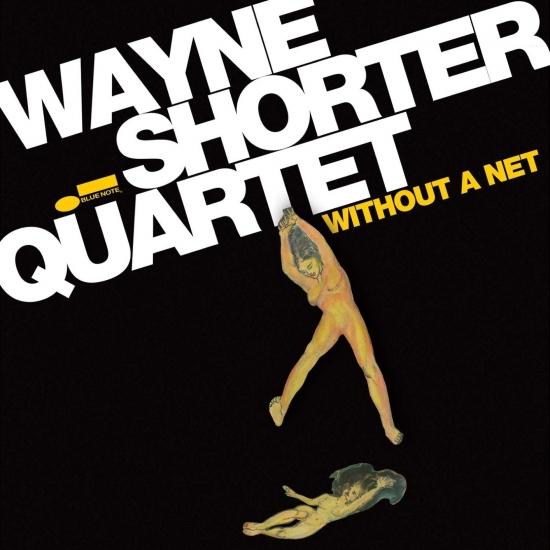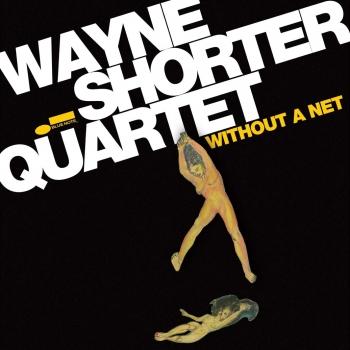
Without A Net Wayne Shorter
Album info
Album-Release:
2013
HRA-Release:
02.01.2018
Album including Album cover
I`m sorry!
Dear HIGHRESAUDIO Visitor,
due to territorial constraints and also different releases dates in each country you currently can`t purchase this album. We are updating our release dates twice a week. So, please feel free to check from time-to-time, if the album is available for your country.
We suggest, that you bookmark the album and use our Short List function.
Thank you for your understanding and patience.
Yours sincerely, HIGHRESAUDIO
- 1Orbits04:49
- 2Starry Night08:48
- 3S.S. Golden Mean05:17
- 4Plaza Real06:56
- 5Myrrh03:03
- 6Pegasus23:06
- 7Flying Down To Rio12:44
- 8Zero Gravity to the 10th Power08:13
- 9(The Notes) Unidentified Flying Objects04:12
Info for Without A Net
Auf "Without A Net" beginnt Wayne Shorters hochkarätig besetztes Quartett jedes Stück in einer Sphäre völliger Offenheit und Rücksichtnahme. In Anbetracht des Raums zwischen den Tönen spürt man, dass die Musiker einander zuhören; sie bewegen sich graziös miteinander. Das gemeinsame Unterfangen befördert Shorter geradezu ins Unbekannte, mal erschafft er ein Gedicht aus Drehungen und Schnörkeln, mal wagt er sturzartige Sprünge und saxophonistische Wendungen, die jegliche Notation unmöglich machen. Dabei ist er nie zu waghalsig, ist kein versponnener Revoluzzer, der seine eigenen Regeln erstellt ? er ist einfach nur von Neugierde getrieben, will sehen, wohin ein kleines musikalisches Motiv ihn führen kann. Diese Neugierde ist ansteckend: Seine Begleiter wagen sich ebenfalls vor, sie teilen seine Geheimnisse.
Diese Art der Bewegung ? dass die Suche eines Musikers die Neugierde der anderen auslöst ? war schon immer charakteristisch für die Musik von Wayne Shorter, angefangen bei seinen Zeiten mit Art Blakey bis hin zu den klassischen Aufnahmen für Blue Note, seine Teilnahme am Miles Davis Quintet in den 1960ern, bei Weather Report ebenso wie in einer Reihe außergewöhnlich einfallsreicher Soloalben. Diese Tradition lässt sich einerseits auf seine Kompositionen zurückführen - rhapsodische Melodien, die die Landschaft des Hard Bop nachhaltig prägten - andererseits fußt es auf der Art, wie er sich in seinen Improvisationen den Melodien annähert.
"Without A Net" enthält Konzertmitschnitte, die während einer Europatour 2011 aufgezeichnet wurden. Einzige Ausnahme ist ein langes neues Stück, "Pegasus", mit den Imani Winds Bläsern als Gäste, das in der Disney Hall in Los Angeles aufgenommen wurde.
Wayne Shorter und seinen langjährigen musikalischen Begleitern wie dem Pianisten Danilo Perez, dem Bassisten John Patitucci und Drummer Brian Blade ist hier ein weiteres zeitloses Meisterwerk gelungen, das den Vergleich mit seinen erfolgreichen Vorgängeralben nicht zu scheuen braucht.
"Der große Saxofonist kehrt mit harter Kost zu Blue Note heim." (Rolling Stone)
"Sorgt noch im hohen Alter für künstlerische Höhepunkte: Wayne Shorter." (Stereo)
"Live aufgenommen während der Europa-Tournee 2011 und ergänzt um das suite-artige Orchesterstück ,,Pegasus", präsentiert sich die Band ohne Netz und doppelten Boden als energisch, manchmal auch hektisch agierendes Ensemble der Alleskönner, ..." (Audio)
"Die acht Titel hier, 2011 auf einer Europa-Tournee mitgeschnitten, sind anders als die üblichen Jazz-Produktionen tiefer, reifer und vor allem ungebundener." (stereoplay)
Wayne Shorter, tenor saxophone, soprano saxophone
John Patitucci, bass
Brian Blade, drums
Danilo Perez, piano
Recorded 8 December 2010 at Walt Disney Concert Hall ("Pegasus" only)
Produced by Wayne Shorter
 Wayne Shorter
Wayne Shorter
Though some will argue about whether Wayne Shorter's primary impact on jazz has been as a composer or as a saxophonist, hardly anyone will dispute his overall importance as one of jazz's leading figures over a long span of time. Though indebted to a great extent to John Coltrane, with whom he practiced in the mid-'50s while still an undergraduate, Shorter eventually developed his own more succinct manner on tenor sax, retaining the tough tone quality and intensity and, in later years, adding an element of funk. On soprano, Shorter is almost another player entirely, his lovely tone shining like a light beam, his sensibilities attuned more to lyrical thoughts, his choice of notes becoming more spare as his career unfolded. Shorter's influence as a player, stemming mainly from his achievements in the 1960s and '70s, has been tremendous upon the neo-bop brigade who emerged in the early '80s, most notably Branford Marsalis. As a composer, he is best known for carefully conceived, complex, long-limbed, endlessly winding tunes, many of which have become jazz standards yet have spawned few imitators.
Shorter started on the clarinet at 16 but switched to tenor sax before entering New York University in 1952. After graduating with a BME in 1956, he played with Horace Silver for a short time until he was drafted into the Army for two years. Once out of the service, he joined Maynard Ferguson's band, meeting Ferguson's pianist Joe Zawinul in the process. The following year (1959), Shorter joined Art Blakey's Jazz Messengers, where he remained until 1963, eventually becoming the band's music director. During the Blakey period, Shorter also made his debut on records as a leader, cutting several albums for Chicago's Vee-Jay label. After a few prior attempts to hire him away from Blakey, Miles Davis finally convinced Shorter to join his Quintet in September 1964, thus completing the lineup of a group whose biggest impact would leap-frog a generation into the '80s.
Staying with Miles until 1970, Shorter became at times the band's most prolific composer, contributing tunes like 'E.S.P.,' 'Pinocchio,' 'Nefertiti,' 'Sanctuary,' 'Footprints,' 'Fall' and the signature description of Miles, 'Prince of Darkness.' While playing through Miles' transition from loose post-bop acoustic jazz into electronic jazz-rock, Shorter also took up the soprano in late 1968, an instrument which turned out to be more suited to riding above the new electronic timbres than the tenor. As a prolific solo artist for Blue Note during this period, Shorter expanded his palette from hard bop almost into the atonal avant-garde, with fascinating excursions into jazz/rock territory toward the turn of the decade.
In November 1970, Shorter teamed up with old cohort Joe Zawinul and Miroslav Vitous to form Weather Report, where after a fierce start, Shorter's playing grew mellower, pithier, more consciously melodic, and gradually more subservient to Zawinul's concepts. By now, he was playing mostly on soprano, though the tenor would re-emerge more toward the end of WR's run. Shorter's solo ambitions were mostly on hold during the WR days, resulting in but one atypical solo album, Native Dancer, an attractive side trip into Brazilian-American tropicalismo in tandem with Milton Nascimento. Shorter also revisited the past in the late '70s by touring with Freddie Hubbard and ex-Miles sidemen Herbie Hancock, Ron Carter, and Tony Williams as V.S.O.P.
Shorter finally left Weather Report in 1985, but promptly went into a creative slump. Still committed to electronics and fusion, his recorded compositions from this point became more predictable and labored, saddled with leaden rhythm sections and overly complicated arrangements. After three routine Columbia albums during 1986-1988, and a tour with Santana, he lapsed into silence, finally emerging in 1992 with Wallace Roney and the V.S.O.P. rhythm section in the 'A Tribute to Miles' band. In 1994, now on Verve, Shorter released High Life, a somewhat more engaging collaboration with keyboardist Rachel Z.
In concert, he has fielded an erratic series of bands, which could be incoherent one year (1995), and lean and fit the next (1996). He guested on the Rolling Stones' Bridges to Babylon in 1997, and on Herbie Hancock's Gershwin's World in 1998. In 2001, he was back with Hancock for Future 2 Future and on Marcus Miller's M². Footprints Live! was released in 2002 under his own name, followed by Alegría in 2003 and Beyond the Sound Barrier in 2005. Given his long track record, Shorter's every record and appearance are still eagerly awaited by fans in the hope that he will thrill them again. Blue Note Records released Blue Note's Great Sessions: Wayne Shorter in 2006. (Richard S. Ginell). Source: Blue Note Records.
This album contains no booklet.



















